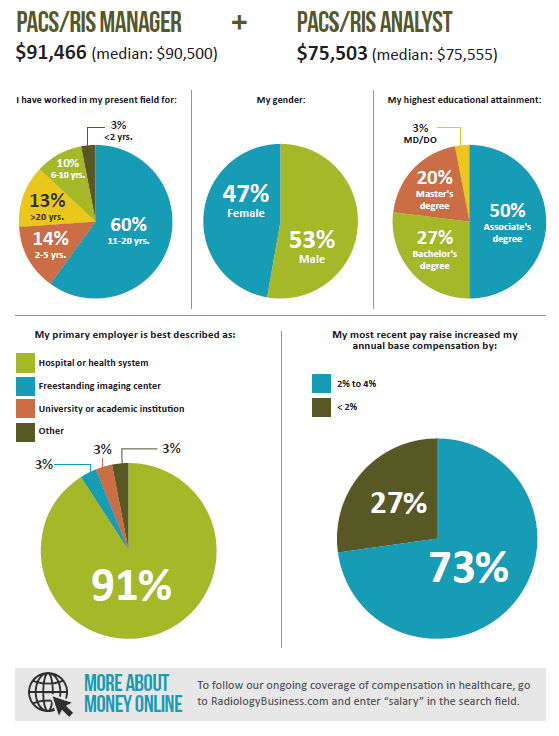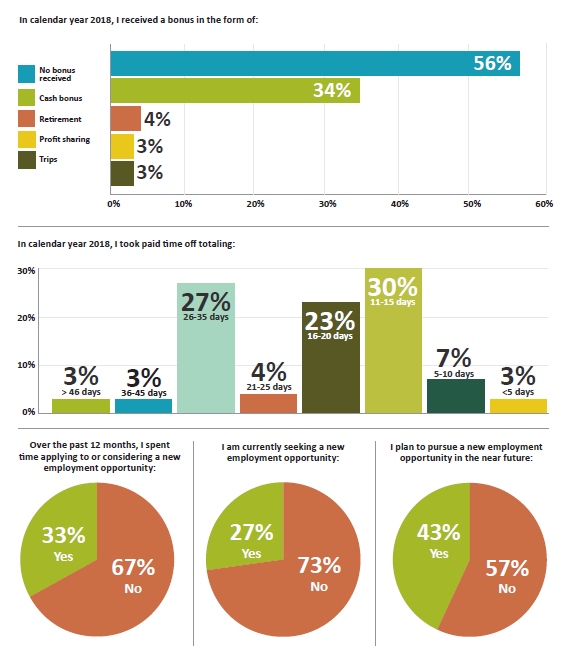2019 Radiology Salary Survey: What’s in Everyone Else’s Wallet?
RBJ’s first annual salary survey drew a total of 539 completed responses and produced a number of noteworthy insights. Some of these came with the salaries themselves, others with the contextualizing questions we asked.
At the high end of the pay curve, 16% of our responding radiologists reported making more than $500,000 in base gross annual salary as of the end of 2018. Of these, 6.4% reported grossing more than $1 million.
Other key findings as fleshed out in the pages to follow:
• Radiologist pay growth is stagnant. Almost 7 in 10 saw an increase of less than 2% with their most recent raise.
• Radiologists who excel at beating burnout may do so by not skimping on R&R. Nearly a third took more than 46 paid vacation days in 2018.
• Most radiologists are happy enough with their present work situation to plan on staying put. However, a surprising 4 out of 10 considered pursuing a new opportunity last year.
• Radiology administrators are earning extra cash by performing well. More than half enjoyed a cash bonus in 2018.
• The technologist population is highly experienced. Only 16% of techs have been in their field for 10 years or fewer. An eye-opening 84% have been at it for at least 11 years, with some 60% topping 20 years.
• PACS jobs, like radiology administrative roles, are peopled by a small but nontrivial number of MDs, DO’s and PhDs. Both fields employ around 3% with these advanced degrees.
And now on to the full results with one more note: The bolded salaries are averages.
Radiologist
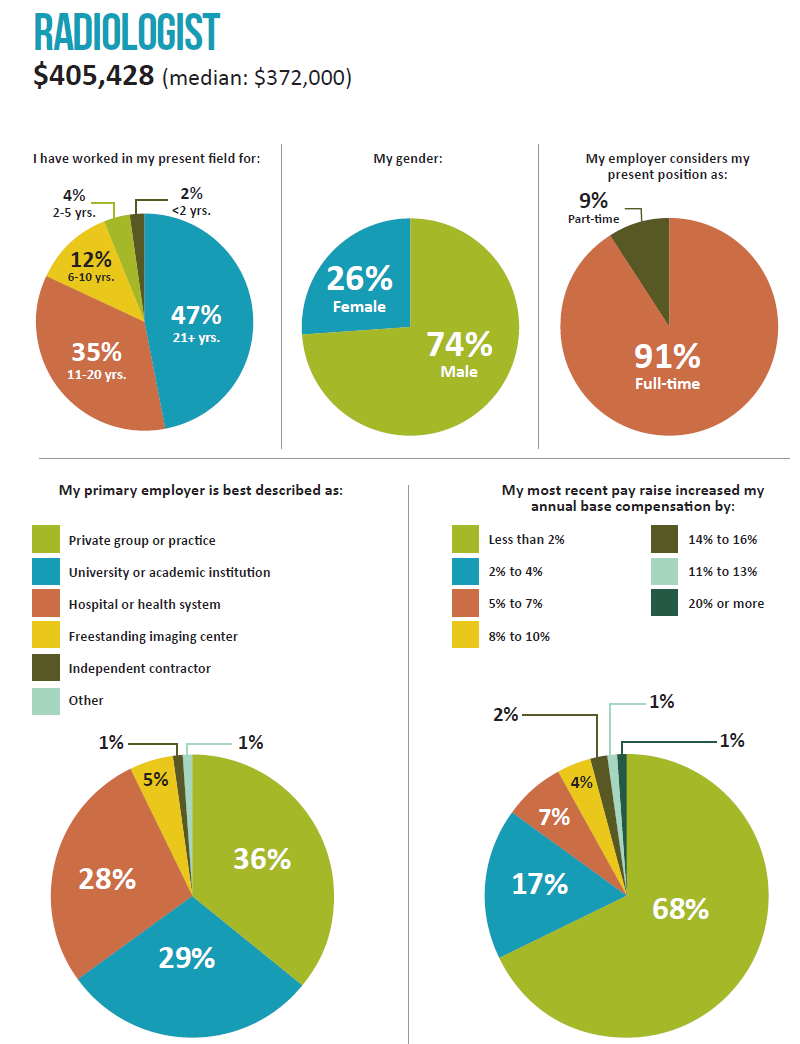
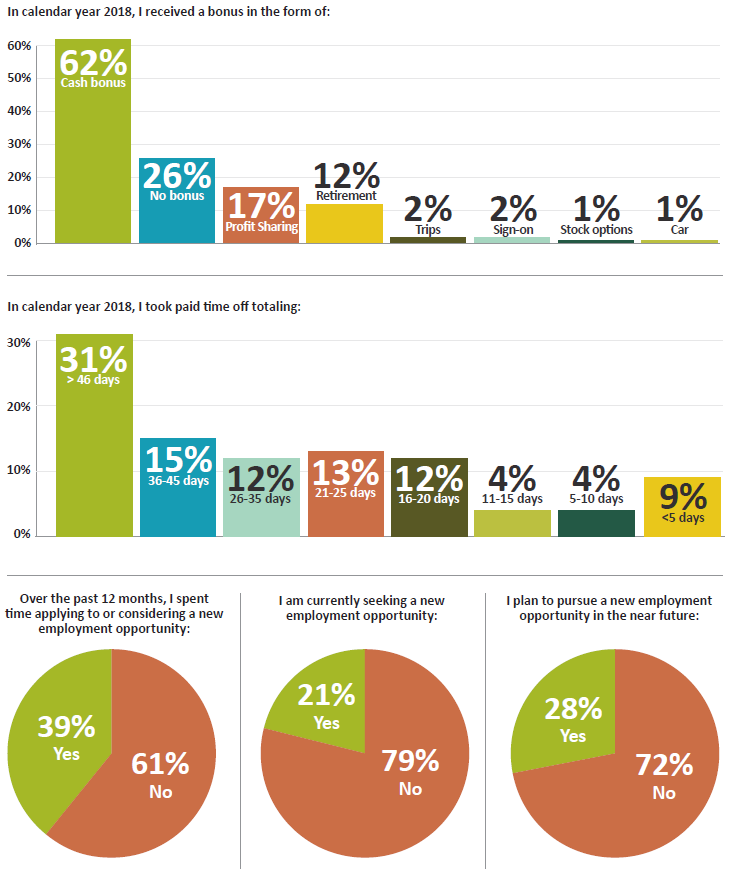
VP Radiology/Radiology Service Line Director + Radiology Administrator
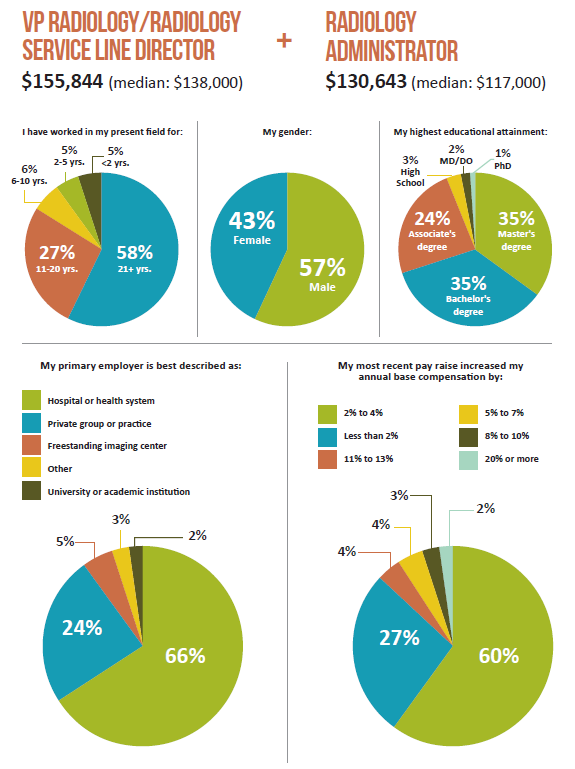
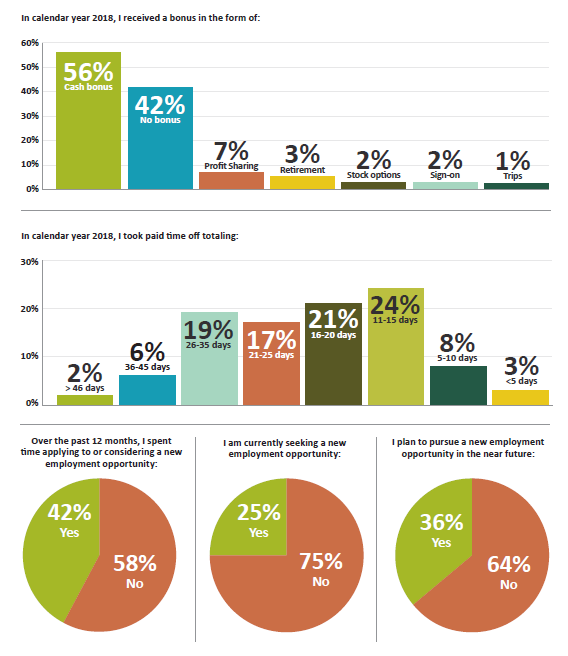
Technologist or Technologist/Manager
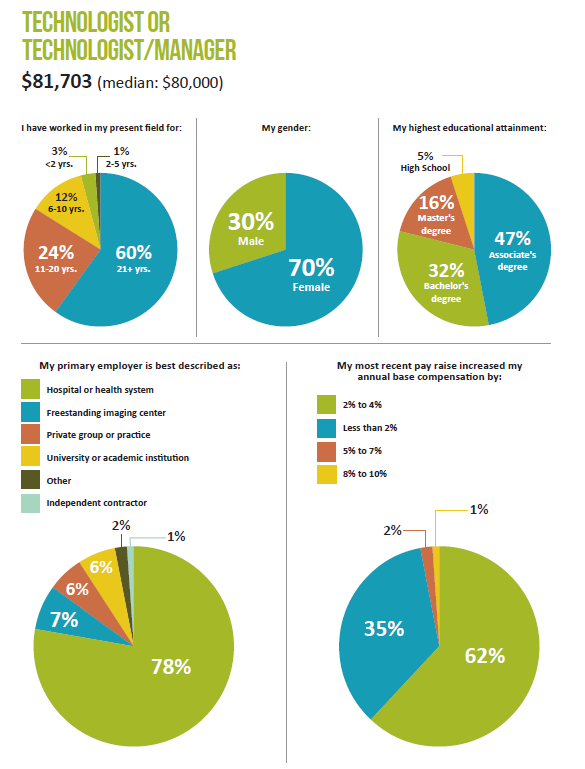
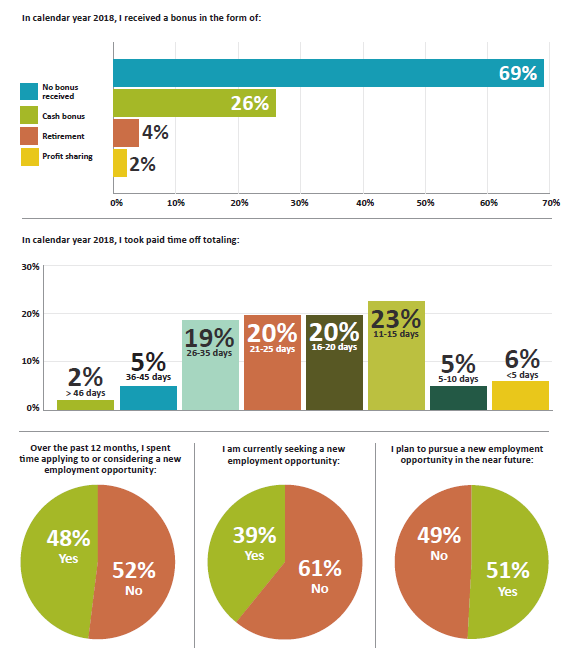
PACS/RIS Manager + PACS/RIS Analyst
